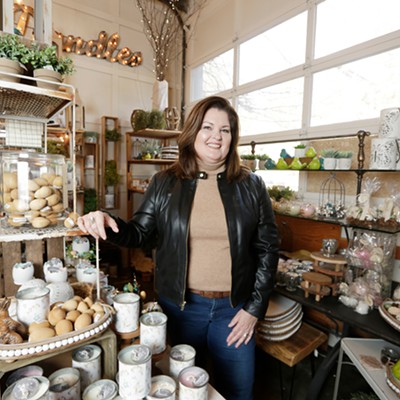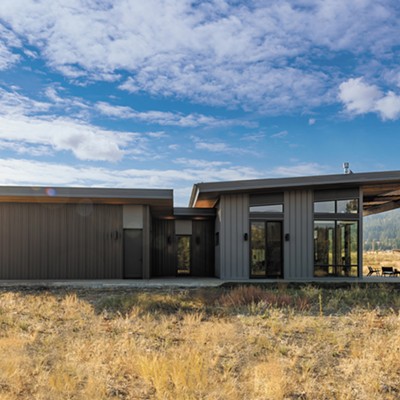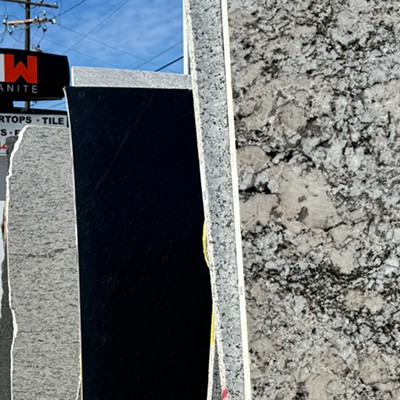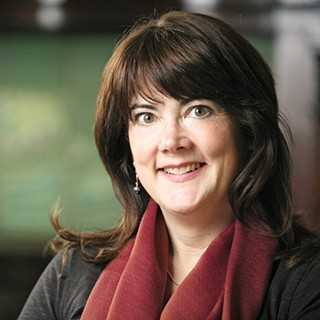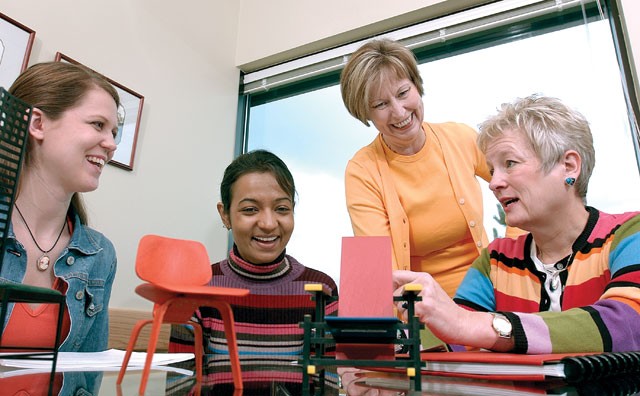
Ever wonder if you could continue to live in your home if you suddenly couldn’t climb stairs? Or what if you suddenly had to rely on public transportation? How would you cope? Could your home be designed to help you out?
Creating environments that enhance health and wellbeing is one goal of the WSU Interdisciplinary Design Institute. For the past six years, the innovative collaboration among students of interior design, landscape architecture and architecture has been directed by Nancy Blossom.
“My background is in interior design, and so I’m looking at the room,” says Blossom. “But the room sits within a building, which sits within a landscape, which sits within a larger environment. And I think the Western tradition is that all of those pieces are separate, when in reality, they all relate to each other.”
More than just embellishing the appearance of a space, though, Blossom says good design can — or, often more accurately, could — enhance its livability. “It really does seem to be the American dream to be able to age in place, but we don’t build to support that,” Blossom says. “We don’t have the social networks to support that, and we don’t have the physical spaces.”
Design standards are based on attributes of a strapping 6-foot-tall American male. So kitchen cabinets that are merely inconvenient for short, healthy people can become a real barrier for older people. “If you look at someone who is in their early aging cycle with the intention of staying in their home, you begin to realize what the dangers of these types of things are — level changes, access to cabinets, the ability to support yourself during a fall. All of these things become questionable,” she says. “Smart design can mitigate those barriers.”
Good design may also help ensure that people don’t become stranded in their homes. Having access to public transportation, as well as walking and biking paths means people can live healthier lives. “[Design] should certainly facilitate your ability to move,” says Blossom. “The question is, can you by design make it safer and more enticing to do those things?”
While having a safe environment is essential, design can also affect mental health and clarity. “Another area of research concerns the notion of your home as a restorative space. We are used to being stimulated … by multiple things at once, which actually keeps us at a point of stress. The idea is that in the home you systematically reduce all those kinds of stress inducers and create environments that allow you to decompress.”
Reducing clutter is fairly obvious solution, but, as Blossom points out, that requires places to put things away. Another way to create a relaxing environment is through careful use of color. “Color is very subjective,” she cautions. “And I don’t like to suggest that there is a science that says every person is going to respond to color combinations the same way.” Instead, she says to move toward something that makes you feel restful. And always, in design, she says, consider elements that appeal to you on many levels. “Mystery and complexity is what we call it. And it is that ability to anticipate something beyond what is there, the ability to stimulate your imagination or your thought process, to move you into contemplation and creative thought.”
So what led Blossom to her career? Obviously it’s been a good fit, because, although she modestly doesn’t mention it, she has authored numerous publications, is an instrumental part of the only scientific journal on interior design, and has received accolades in teaching and design. Blossom laughs and says, “I have no idea. When I was a freshman in college, a friend of mine was in the field, and it looked like it was a lot of fun, so I just jumped in and I haven’t ever looked back.”
Then she reconsiders: “I have had a moment.”
She describes a seminar for students that included a panel of design icons. “This one gentleman had come from Texas and had worked with the Johnsons on the design of the White House. He was just a grand, entertaining man. And he sat on the stage and said, ‘I get to travel the world and spend other people’s money. What more do you want?’
“And he had the personality to say something like that and carry it off. But I have to tell you that I drove to work for days thinking, ‘Is that all I’m doing? I’m a design educator. Am I teaching people to travel the world and spend other people’s money? If that’s all I’m doing, what am I contributing?’
“But I do believe that good design enhances the environment, enhances people’s lives, and makes us more thoughtful about our place on earth. And when I came to that conclusion, then I actually found a lot of meaning that has sustained me through my career.”








